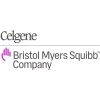
Aramchol for HIV-associated Nonalcoholic Fatty Liver Disease and Lipodystrophy
Nonalcoholic Fatty Liver DiseaseHIVA subset of patients with NAFLD that have not been extensively studied are those infected with human immunodeficiency virus (HIV). Currently, there is no FDA approved treatment for NAFLD or NASH. Additionally, there have been no significant clinical trials for HIV patients with NAFLD and there are no approved treatment options. We plan to conduct a randomized, double-blinded, placebo-controlled clinical trial to examine the efficacy of 600 mg of Aramchol daily (including 200 mg tablet and 400 mg tablet) versus identical placebo given over 12 weeks to improve HIV-associated hepatic steatosis as measured by a validated and accurate magnetic resonance imaging (MRI)-based technique.

Open-Label Study To Evaluate MN-001 on HDL & Triglyceride in NASH & NAFLD Subjects
Non-alcoholic SteatohepatitisHypertriglyceridemia2 moreThis is a multi-center, proof-of-principle, open-label study designed to evaluate the efficacy, safety, and tolerability of MN-001 in non-alcoholic steatohepatitis (NASH) and Non-Alcoholic Fatty Liver Disease (NAFLD) subjects with hypertriglyceridemia.

The Effects of Type of Exercise in Non-alcoholic Fatty Liver Disease
Non-alcoholic Fatty Liver DiseaseThe type of physical activity such as, aerobic or resistant exercise required to reduce liver fat content in patient with non-alcoholic fatty liver disease (NAFLD) remains unclear. The purpose of this study is to determine whether aerobic exercise should provide improvement of hepatic fat content and inflammation as well as metabolic profiles and anthropometric parameters better than resistant exercise.

Efficacy and Safety of E.Coli Nissle 1917 in Patients With Mild (Stage 1-2) or Minimal Hepatic Encephalopathy...
Hepatic EncephalopathyLiver Cirrhosis1 moreThe purpose of study to assess the short-term efficacy and safety of probiotic E.coli Nissle 1917 strain comparing to lactulose and rifaximin in patients with mild (Stage 1-2) or minimal hepatic encephalopathy

Pharmacokinetics of Enasidenib (CC-90007) in Participants With Mild, Moderate and Severe Hepatic...
Hepatic ImpairmentThis is a multi-center, open-label study to assess the PK of single 100 mg oral doses of enasidenib (CC-90007) in subjects with mild, moderate, and severe hepatic impairment (HI), and in matched healthy control subjects with normal hepatic function. Degrees of hepatic impairment will be determined during screening by the subject's score according to Pugh's Modification of Child's Classification of Severity of Liver Disease. Subjects will be enrolled in 4 Groups as follows: Group A: Approximately 8 subjects with mild hepatic impairment (with a Child-Pugh score of < 7) will be enrolled in Group A. Group B: Approximately 8 subjects with moderate hepatic impairment (with a Child-Pugh score of ≥ 7 to ≤ 9) will be enrolled in Group B. Group C: Approximately 8 subjects with severe hepatic impairment (with a Child-Pugh score of ≥ 10 to ≤ 15) will be enrolled in Group C. Group D: Approximately 8-24 healthy subjects with normal hepatic function will be enrolled in Group D. Subjects in Group D will be matched to subjects in Groups A-C with respect to sex, age (± 10 years), and weight (± 30 pounds). More than 1 subject with differing degrees of HI can be matched to a single control; however, all subjects with HI must be matched to at least 1 healthy match subject.

Effect of Midodrine on HVPG in Advanced Chronic Liver Disease
Chronic Liver DiseasePrimary objective: HVPG response after administration of midodrine as defined by decrease in HVPG by > 20 % from baseline or to less than equals to 12 mmHg. Secondary objectives: Change in HVPG, SVR, heart rate, cardiac output, cardiac index, Blood pressure (systolic, diastolic and mean). Methodology: Consecutive patients of chronic liver disease in the Institute (admitted or coming to OPD) as per the inclusion and exclusion criteria will be studied. Study Population: Patients of advanced chronic liver disease admitted or OPD patients in ILBS Study Design: A single arm interventional study Study Period: 6 months Inclusion Criteria: i) CLD with grade III ascites with Na < 130 / Systolic BP < 90 / type 2 HRS(n=30 ) (ii) ACLF (APASL criteria) with Na < 130 / Systolic BP < 90 / AKI (n=30) Exclusion Criteria: age < 18 and > 75, pregnancy, splanchnic venous thrombosis, HCC, HE, significant cardiopulmonary disease, uncontrolled diabetes, hypertension, intrinsic renal disease, peripheral vascular disease. Sample Size with justification: This is a pilot study where a total of 60 patients will be enrolled - 30 each in the two groups. Intervention: HVPG will be done in these patients at baseline and then after 3 hours of 10 mg of midodrine tablets. Monitoring and assessment: Various parameters will be assessed during the procedure before and after 3 hours of midodrine such as HVPG (WHVP - FHVP), SVR, heart rate, cardiac output, cardiac index, Blood pressure (systolic, diastolic and mean), SpO2. - Statistical Analysis: Continuous data will be represented by mean ± SD or median ± IQR. Categorical data will be represented by n = frequency (%). Categorical data will be analyzed by Chi square test or Fisher exact test as appropriate. Continuous data will be compared by using student t test or Mann Whitney test (when applicable). The change in HVPG will be analyzed by using paired t test or Wilcoxon signed rank test. The % change in the individual group will be compared to see the significance between the groups. The significance will be seen at 5%. Adverse Effects: same as for HVPG (mild pain / hematoma at the puncture site, transient arrhythmias). Midodrine has got good safety profile and is used in patients of advanced chronic liver disease. Stopping Rule of study: nil Expected outcome of the project: If result shows that HVPG is decreased by midodrine, then it can be used in place of beta blockers when they are contraindicated or have the potential of causing adverse effects.

A Study of Quizartinib Pharmacokinetics in Participants With Moderate Hepatic Impairment
Hepatic ImpairmentModerate Impaired Hepatic FunctionQuizartinib is a novel oral Class III receptor tyrosine kinase (RTK) inhibitor exhibiting highly potent and selective but reversible inhibition of Feline McDonough sarcoma (FMS)-like tyrosine kinase 3 (FLT3). Quizartinib is currently being studied alone or in combination with other agents as a treatment for acute myeloid leukemia (AML) and myelodysplastic syndrome (MDS) in adult and pediatric populations.

Effect of PNPLA3, TM6SF2 and MBOAT7 Genetic Variants on Non-alcoholic Fatty Liver Disease Therapeutic...
Non-Alcoholic Fatty Liver DiseaseInsulin ResistancePatatin-like phospholipase domain-containing protein-3 (PNPLA3), the transmembrane 6 superfamily member 2 protein (TM6SF2) and membrane bound O-acyltransferase domain containing 7 (MBOAT7) genes are involved in non-alcoholic fatty liver disease (NAFLD) development and worsening. Following the actual scientific knowledge, some studies have identified the genetic background surrounding NAFLD, counting up to forty different genetic variants that seem to exert also a crucial role in the disease evolution, according to the natural history, until hepatocellular carcinoma onset. However, few data exist regarding their influence on the treatment response. The aim was to explore the effect of 303 mg of silybin-phospholipids complex, 10 mg of vitamin-D and 15 mg of vitamin-E twice a day for six months in NAFLD patients carrying PNPLA3-rs738409, TM6SF2-rs58542926 and MBOAT7-rs641738 genetic variants. The assessed mutations are independently associated with no response to a silybin/vitamin D-based therapy and could be useful therapeutic predictive markers in this context.

A Study of Efinopegdutide (MK-6024) in Participants With Nonalcoholic Fatty Liver Disease (NAFLD)...
Nonalcoholic Fatty Liver DiseaseNonalcoholic SteatohepatitisThe principal goal of this study is to determine the efficacy of efinopegdutide in liver fat reduction in participants with NAFLD. The primary hypotheses are that efinopegdutide is superior to semaglutide, or that efinopegdutide is superior to semaglutide by at least 10% with respect to mean relative reduction from baseline in liver fat content (LFC) after 24 weeks.

Time Restricted Feeding on Nonalcoholic Fatty Liver Disease ( TREATY-FLD ):a 12-month Follow-up...
Nonalcoholic Fatty Liver DiseaseTime restricted feeding (TRF) is a novel type of intermittent calorie restriction diet that involves eating a daily period of 8 hours or less. This is a 6-month follow-up study of TREATY-FLD trial to evaluate the effect of time restricted feeding (TRF) on hepatic fat contents and cardiometabolic risk factors in obese adults over 6 months compared to continuous energy restriction (CER).
